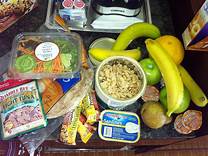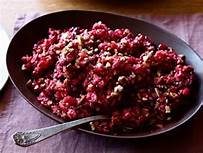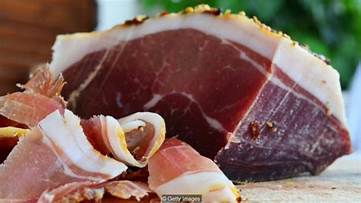Importance of well balance diet
All food contains all of the nutrients we need to be healthy, it is necessary to eat various foods in sufficient amounts. A good diet will include many different foods, and sufficient in quantity and quality to meet an individual’s need for food energy and other micro nutrients.
TEA
Typical serving size:
6 fluid oz or 177 mLHOW IT HARMS
Iron absorption Increased urination Insomnia MigrainesWHAT IT HEALS
Weight gain Stroke Diabetes Heart disease Cancer Asthma Dental health Diarrhea Tea, a shrub in the camellia family, is the world’s most popular nonalcoholic beverageMost tea is grown in India, Sri Lanka, China, Japan, Taiwan, and Indonesia
Like coffees, the best-quality teas are grown in the shade at high altitudes, and the finest leaves are plucked from the youngest shoots and unopened leaf buds, which also contain the highest levels of phenols, enzymes, and caffeine
Researchers are discovering evidence that tea may offer not only soothing warmth and mild stimulation, but also
Health Benefits
Tea contains hundreds of compounds, including various flavonoids, a class of chemical with powerful antioxidant properties
A subclass of flavonoids, the catechins, is responsible for the flavor as well as many
Health Benefits
The extent to which these compounds are present in the beverage depends on how the leaves are processed
White tea is made from the green buds and young leaves that are steamed and dried
It is the least processed type of tea
Green tea is made by steaming the leaves to halt any enzyme activity
Black tea is made by crushing, fermenting (exposing the leaves to the air), and drying the leaves
Oolong tea is only partially fermented
The highest concentration of catechins is found in green tea and white tea, although black tea is also a good source
Brand-name teas are mixtures of as many as 20 different varieties of leaves, blended to ensure a consistent flavor
Herbal teas are not true tea
They are infusions, or tisanes, of various pleasant-tasting plants such as chamomile, fennel, lavender, and peppermint
Because most of them do not contain caffeine, they offer an alternative for people who prefer to avoid this stimulant
TEA FACT
Health Benefits
Promotes weight lossThe results from a number of randomized, controlled intervention trials have shown that consumption of green tea catechins (270 mg to 1200 mg a day) may reduce body weight and fat, possibly by increasing energy expenditure and promoting the oxidation of fat
Helps prevent stroke
One study found that the risk of stroke was reduced by about 70% in men who drank five or more cups of black tea a day: Other studies showed that the risk of having a heart attack was reduced by more than 40% for men and women who consumed one or more cups of tea per day
Flavonoids in tea may protect against stroke in two ways
They reduce the ability of blood platelets to form clots, the cause of most strokes
They also block some of the damage caused to arteries by free radicals, unstable molecules that are released when the body consumes oxygen
Fights diabetes
Research suggests that people who drink green tea are less likely to develop type 2 diabetes and have a lower risk of death from cardiovascular disease
The biological mechanisms are still unknown but a popular hypothesis is that the epigallocatechin gallate (EGCG) in green tea decreases blood pressure, lowers blood sugar, and increases blood flow
Fosters heart health
The antioxidants in tea may explain the fact that people who drink a lot of tea are much less likely to die from heart disease
Antioxidants prevent the oxidation of cholesterol, making it less likely to stick to artery walls
Inhibits cancer
A number of studies have shown that tea may offer protection against a variety of cancers
EGCG is thought to be responsible for tea’s anticancer properties
EGCG protects the DNA in cells from cancer-causing changes
It may also inhibit an enzyme that cancer cells need in order to replicate
Fights infections
Researchers report in the Proceedings of the National Academy of Sciences that they have found a chemical in tea that boosts the body’s defense against disease fivefold
They say they isolated from ordinary black tea a substance called L-theanine, also found in green and oolong tea
L-theanine is broken down in the liver to ethylamine, a molecule that primes the response of an immune blood cell called the gamma-delta T cell
Gamma-delta T cells in the blood are the first line of defense against many types of bacterial, viral, and parasitic infections
Alleviates asthma symptoms
Naturally occurring theophyllines in tea dilate the airways in the lungs and have been found to help some people with asthma and other respiratory disorders to breathe more freely
In fact, theophyllines have been developed as drugs to treat asthma and other constrictive lung disorders
Supports dental health
Tannins, which are found in wine as well as tea, are chemicals that bind surface proteins in the mouth, producing a tightening sensation together with giving the impression of a full-bodied liquid
They also bind and incapacitate plaque-forming bacteria in the mouth
The fluoride in tea—particularly green tea—also protects against tooth decay
Quells diarrhea
Tea’s binding action makes it useful against diarrhea
Health Risks
Iron absorptionThe tannins in tea can cut iron absorption by more than 80% when tea is sipped with an iron-rich meal
Tea-drinking vegetarians are especially susceptible
Individuals with a tendency to anemia can drink citrus juice at mealtimes to promote iron absorption; squeezing a wedge of lemon or adding milk to tea also binds the tannins and partly blocks their effect on iron
Tea drinking between meals does not affect iron absorption
Excessive urination
Tea has a diuretic effect, which increases the kidneys’ output of urine
Excessive urination can upset the body’s fluid and chemical balance by washing potassium from the body
Insomnia
Tea leaves contain twice as much caffeine, weight for weight, as coffee beans do
But when measured by volume, tea has only half as much caffeine as coffee because tea is drunk weaker and coffee is more completely extracted from the grounds
A cup of black or green tea contains 35 to 45 mg of caffeine
Theobromine, which is also found in tea, has effects similar to those of caffeine but milder
Migraines
Tea may trigger a migraine headache in hypersensitive people; for others, it may alleviate headaches when taken with aspirin or similar painkillers




